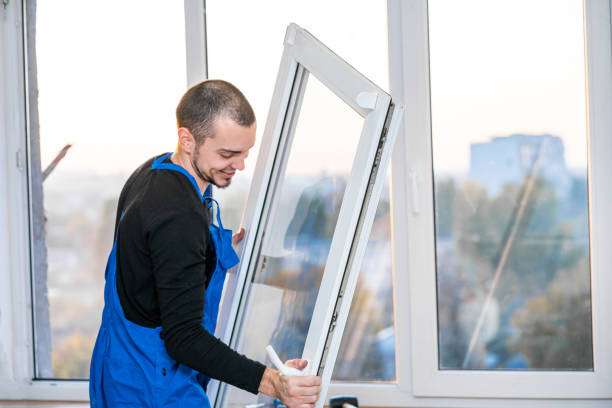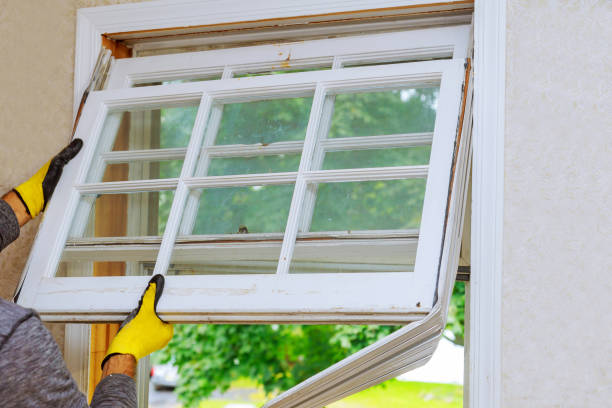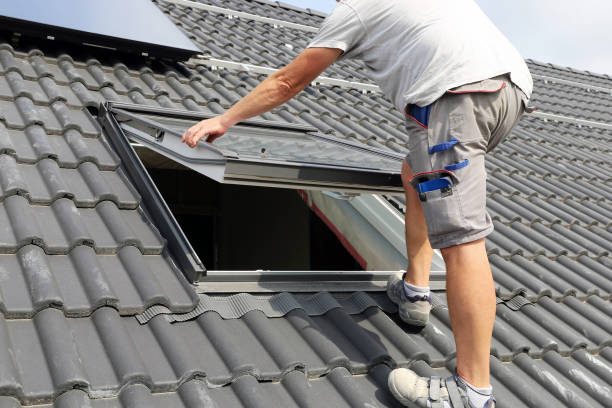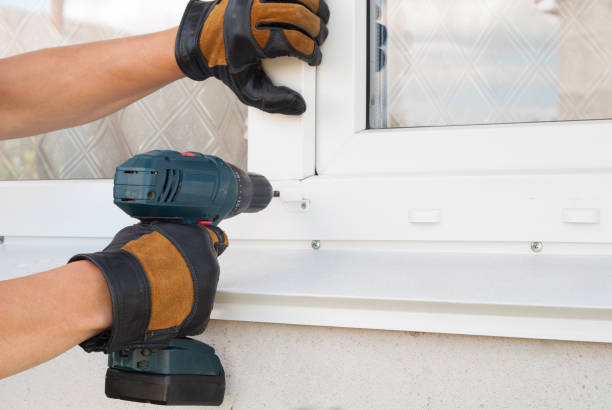6 Essential Things to Consider Before Window Installation Rockville, MD

Replacing windows in your home is a significant investment that can enhance both the aesthetics and functionality of your living space. However, before moving forward with a window replacement project, it’s important to carefully evaluate several key factors to ensure the best outcome. Below are six essential considerations homeowners should keep in mind.
1. Assess Your Budget
Understanding how much you’re willing and able to spend is a critical first step. Window replacement costs can vary significantly depending on the type, size, material, and number of windows being replaced.
- Cost Breakdown:
| Component | Estimated Percentage of Cost |
|————————-|—————————–|
| Materials (windows) | 50% |
| Installation labor | 30% |
| Additional expenses* | 20% |
*Additional expenses may include permits, disposal fees, and repairs to surrounding structures.
To avoid overspending, request multiple quotes from reputable contractors and compare pricing for different window options.
2. Energy Efficiency
- Low-E (low emissivity) glass: Reduces heat transfer while allowing natural light into your home.
- Double or triple glazing: Provides better insulation by trapping air between multiple panes of glass.
- Gas fills (e.g., argon or krypton): Enhances thermal performance by filling spaces between panes with insulating gas.
- ENERGY STAR® certification: Ensures compliance with strict energy-efficiency guidelines.
Energy-efficient windows not only lower heating and cooling costs but also contribute to environmental sustainability.
3. Style and Design
- Double-hung windows: Classic design with two operable sashes for ventilation.
- Casement windows: Hinged on one side; ideal for hard-to-reach spaces like above kitchen sinks.
- Sliding windows: Move horizontally along tracks; suitable for wide openings.
- Bay or bow windows: Project outward from the wall; provide additional seating or space inside.
Take time to envision how each design will look in relation to both your interior decor and exterior curb appeal.
4. Local Climate Conditions
- In hot climates, opt for Low-E glass coatings that reflect sunlight effectively.
- In colder regions, prioritize double or triple-pane glass combined with insulated frames to minimize heat loss.
Discuss climate-specific options with an experienced contractor who understands local weather challenges.
5. Material Choices
| Material | Pros | Cons |
| Vinyl | Affordable, low maintenance | Limited color options |
| Wood | Timeless aesthetic appeal | Requires regular upkeep |
| Aluminum | Lightweight and durable | Less energy-efficient |
| Fiberglass | Excellent insulation & low maintenance | Higher upfront cost |
Evaluate the long-term durability, maintenance needs, and initial costs when selecting frame materials.
6. Installation Expertise
Even high-quality windows won’t perform well if they’re improperly installed. Hiring certified professionals ensures that the installation process adheres to industry standards while minimizing risks such as air leaks or water infiltration.
Key benefits of professional installation: – Correct measurement and fitment – Proper sealing techniques for weatherproofing – Compliance with local building codes
Ask potential contractors about their certifications (e.g., InstallationMasters™), warranties offered on labor/services provided, and their track record of customer satisfaction.
By considering these six factors before replacing your home’s windows, you’ll be better prepared to make informed decisions that align with your long-term goals—whether improving energy efficiency, enhancing curb appeal, or increasing property value.
Why Certified Professionals Are Essential for Windows Rockville, MD Installation Projects
When it comes to window installation, the expertise and knowledge of certified professionals can mean the difference between a seamless, long-lasting project and one plagued with issues. Homeowners often underestimate the complexities involved in installing or replacing windows, but partnering with qualified professionals ensures that each aspect of the process is handled with precision and care. Below, we’ll cover why certified professionals are essential for window installation projects and how their expertise benefits homeowners.
Expertise and Training for Replacement Windows in Rockville, MD
Certified professionals undergo specialized training to ensure they understand various types of windows, materials, and installation techniques. Their certification verifies that they have met industry standards for quality and safety.
- Knowledge of Building Codes: Certified installers are familiar with local building codes and regulations related to window installation. This ensures compliance with laws that might otherwise result in fines or structural issues.
- Advanced Techniques: They stay up-to-date on modern installation practices, including energy-efficient methods and technologies. This expertise translates into better results for your home’s energy efficiency.
Expert Window Repair Services in Rockville, MD
Hiring a certified professional provides peace of mind regarding the quality of workmanship. A proper installation isn’t just about fitting a window into an opening—it involves addressing insulation, weatherproofing, alignment, and other critical factors.
Key quality benefits include:
– Precise Measurements: Properly aligned windows prevent drafts, leaks, and unnecessary strain on your HVAC system. – Weatherproofing Expertise: Professionals know how to seal windows effectively to protect against water damage. – Warranty Compliance: Many manufacturers require professional installation for warranties to remain valid.
| Feature | Professional Installer | DIY/Non-Certified Installer |
| Knowledge of Building Codes | Yes | Often lacking |
| Warranty Compliance | Guaranteed | Typically voided |
| Energy Efficiency | Optimized | Inconsistent |
Essential Safety Tips for Window Glass Replacement Rockville, MD
Window installations can pose safety risks if not done correctly. Certified professionals prioritize safety at every stage of the process.
- Proper Tools and Equipment: Professionals use specialized tools designed for precise cutting, sealing, and placement.
- Risk Mitigation: They’re trained in safe handling practices when dealing with heavy glass panes or working at heights.
- Structural Integrity Protection: Incorrect installations can compromise the structural integrity of walls around your windows; certified experts avoid such issues.
Cost Efficiency Over Time
While hiring certified experts may seem more expensive upfront than attempting DIY or hiring uncertified laborers, it often saves money in the long run by avoiding costly repairs or replacements caused by poor workmanship.
Long-Term Cost Benefits:
- Reduced energy bills due to improved seals and insulation.
- Fewer maintenance issues stemming from improper installations.
- Increased property value thanks to professional-level craftsmanship.
How to Verify Certification
- Ask for certifications from reputable organizations like AAMA (American Architectural Manufacturers Association) or NFRC (National Fenestration Rating Council).
- Request proof of insurance coverage to protect against liability during the project.
- Check references or read online reviews about their previous work.
By prioritizing experience and skill over cost savings alone, you’ll achieve a safer, more durable outcome for your window installation project—one that enhances both comfort and aesthetics in your home over time.
Why Certified Professionals Are Key to a Successful Window Installation Project
When replacing or installing windows in your home, the expertise of the installer plays a critical role in ensuring a successful outcome. Hiring certified professionals is not just about convenience—it directly impacts the functionality, safety, and durability of your windows. Below, we explore why certified experts are essential for a window installation project and how their involvement benefits homeowners.
The Value of Certification
These programs ensure that professionals understand proper installation techniques, building codes, and safety measures specific to different types of windows.
Expertise in Handling Complex Installations
- Installing large or custom-shaped windows
- Working with older homes that may require structural adjustments
- Ensuring compatibility with energy-efficient or high-performance glass options
Their ability to troubleshoot these complexities can save time and prevent costly errors.
Ensuring Compliance with Local Building Codes
- Ensure legal compliance for projects
- Avoid fines or penalties related to improper installations
- Provide documentation needed for inspections or resale purposes
By adhering to local codes, they also enhance the long-term safety of your home.
Benefits of Professional Tools and Techniques
| Aspect | Benefit |
| Precision | Proper alignment for airtight seals |
| Safety | Reduced risk of glass breakage during handling |
| Efficiency | Faster completion times without sacrificing quality |
Additionally, they employ advanced techniques such as thermal breaks and weatherproofing methods that contribute to better insulation and energy efficiency.
Warranty Protection
- Documentation proving professional installation
- Peace of mind knowing materials are installed according to manufacturer specifications
- Assistance with future warranty claims if issues arise
This ensures homeowners won’t face unexpected costs due to voided warranties caused by improper DIY work or hiring unqualified contractors.
Long-Term Savings
- Reduced likelihood of repairs from improper installation
- Enhanced energy efficiency lowering utility bills
- Extended lifespan of properly installed windows
Investing in expertise now can help avoid recurring expenses later.
Hiring certified professionals is not an optional luxury but rather an essential step toward ensuring a safe, durable, and efficient window installation process. Their knowledge, adherence to standards, and use of best practices reduce risks while maximizing value for homeowners over time.
How Proper Adhesives Ensure Safety and Longevity in Window Installation
When installing new windows, many homeowners focus on the design, energy efficiency, and materials involved. However, one often overlooked but critical component of the process is the adhesive used during installation. Proper adhesives are foundational to ensuring both the safety and long-term performance of your windows. Below, we’ll explore how selecting the right adhesive can make all the difference in your window installation project.
The Role of Adhesives in Window Installation
- Sealing the Window Frame: Proper adhesives create an airtight and watertight seal between the window frame and the surrounding structure. This prevents air leaks, water infiltration, and drafts.
- Structural Integrity: High-quality adhesives add to a window’s structural stability by securing it firmly within its frame.
- Thermal Efficiency: By reducing gaps or cracks around the window through effective sealing, adhesives help maintain consistent indoor temperatures and improve energy efficiency.
The failure to use appropriate adhesives can lead to compromised installations that may result in increased energy bills, water damage, or even safety risks over time.
Key Characteristics of Proper Adhesives
- Capable of withstanding extreme temperatures (both hot and cold).
- Resistant to moisture penetration to prevent degradation over time.
- Able to accommodate slight movements caused by thermal expansion and contraction without cracking or breaking apart.
- Strong enough to secure heavy glass panes or large frames without failure under stress.
- Designed for use with specific materials like vinyl, wood, aluminum, or fiberglass without causing damage or improper bonding.
- Long-lasting performance that ensures your window remains secure for decades rather than deteriorating after just a few years.
Types of Adhesives Commonly Used
| Type | Advantages | Best Used For |
| Silicone Sealants | Flexible and weather-resistant | Vinyl frames; exterior sealing |
| Polyurethane Caulk | Strong adhesion; durable | Heavy-duty installations |
| Acrylic Latex Caulk | Easy application; paintable | Interior trim sealing |
| Butyl Rubber Tape | Excellent moisture resistance | Waterproofing exterior joints |
Risks of Using Improper Adhesives
- Water Damage: Without proper sealing, water can seep into gaps around windows leading to rot or mold growth.
- Reduced Energy Efficiency: Air leaks caused by poor adhesion increase heating/cooling costs.
- Safety Hazards: Weak adhesives may compromise structural stability during storms or high winds.
- Frequent Maintenance Needs: Inferior products degrade faster requiring costly repairs sooner than expected.
Tips for Ensuring Proper Adhesive Use
- Consult with certified professionals who have experience working with different types of windows and frames.
- Always follow manufacturer recommendations for adhesive compatibility with your specific window material.
- Use primers if required before applying certain types of sealants for better adhesion.
- Test small areas first to ensure satisfactory results before full application.
- Regularly inspect seals post-installation for any signs of wear or failure so issues can be addressed promptly.
Proper adhesive selection is not just a technical detail — it’s a critical factor that directly affects both short-term performance and long-term durability in your window installation project.
Key Factors to Consider for Window Replacement Rockville, MD Companies
Choosing the right window installation company is a critical step in ensuring your project is completed efficiently, safely, and to a high standard of quality. Below are the top factors to evaluate when selecting a window installation company.
1. Reputation and Reviews
A company’s reputation speaks volumes about its reliability and quality of service. Before making a decision:
– Check online reviews: Look for reviews on platforms like Google, Yelp, or the Better Business Bureau (BBB).
– Ask for references: Request contact information for past clients and inquire about their experiences with the company.
– Look at case studies or portfolios: Many companies showcase completed projects, which can provide insight into their craftsmanship.
2. Licensing and Insurance
Always verify that the company you choose has proper licensing and insurance. This protects both you and the workers in case of accidents or damages during installation. Ensure that they carry:
– A valid contractor’s license specific to your state or region.
– General liability insurance to cover property damage.
– Worker’s compensation insurance for their employees.
3. Experience and Expertise
Window installation requires precision, skill, and knowledge of various products and techniques. Consider these factors:
– Years in business: Companies with several years of experience are often more adept at handling challenges.
– Specializations: Some companies may specialize in specific types of windows, such as energy-efficient options or custom designs.
4. Warranty Options
A reliable window installation company should back its work with warranties on both materials and labor. Key points include:
| Warranty Type | What It Covers | Typical Duration |
|———————–|———————————————————–|—————————–|
| Manufacturer Warranty | Covers defects in materials (e.g., frames, glass) | Varies; often 10–20 years |
| Workmanship Warranty | Covers errors during installation | Typically ranges from 1–5 years |
Ask for written details on all warranties before signing any agreements.
5. Transparent Pricing
Transparency is crucial when it comes to project costs. Avoid surprises by asking for detailed estimates that include: – Cost of materials (windows, adhesives, hardware).
– Labor fees (hourly rates or flat fees).
– Additional charges (disposal fees for old windows).
Request itemized quotes from multiple companies for comparison purposes.
6. Certifications and Training
Certified installers often adhere to higher industry standards compared to those without professional credentials. Look for certifications such as: – EPA Lead-Safe Certification if your home was built before 1978. – Manufacturer-specific certifications showing expertise with certain window brands.
Final Thoughts on Company Selection
Selecting a window installation company requires careful research into their qualifications, reviews, pricing policies, warranties, and professionalism. By evaluating these factors thoroughly, you set yourself up for a stress-free project with superior results tailored specifically to your needs.
- Step-by-Step Guide to Window Replacement Rockville, MD Homeowners Can Trust
- 6 Essential Things to Consider Before Window Installation Rockville, MD
- Expert Tips for Window Installation Rockville, MD: Reputation and Experience Matter
- Essential Factors to Consider When Replacing Windows in Rockville, MD Homes
- Choosing Windows Rockville, MD: DIY vs Professional Installation for the Best Results
- Identifying a Broken Window Seal and Replacement Options for Windows Rockville, MD
- Understanding Window Replacement in Rockville, MD: Full vs. Glass Only








